
Boulton Paul Defiant MkIIa

The Boulton Paul Defiant was a competently designed aircraft that more than met the requirement to which it was produced, but it was a failure none the less. It failed partly due to the fact that no designer could design a fighter handicapped by the weight and drag of a bulky powered turret and at the same time match the speed and agility of contemporary fighters employing the same sized power plant. It's most serious problem with its concept was the division of responsibility between the pilot and the gunner as the aircraft had no forward firing armament which required the pilot to think in abstract terms of getting the gunner in the right position to make a shot. It was all too easy for an enemy to get into the blind spot behind and below the fighter and deliver a killing blow.
The Defiant prototype first flew in August of 1937. Except for a few minor changes the Defiant was pronounced an excellent flying machine with few vices. The first production aircraft flew in July of 1939. The Defiant had a brief period of glory during the Dunkirk evacuation when they were credited with fifty-seven kills in a two day period, claiming that the Germans had mistaken them for Hurricanes. While all of this was accepted at the time and it garnered some good publicity for the Defiant it was subsequently found post war that the claims were highly exaggerated. In further actions the Defiant did not fair nearly as well and with losses mounting and the fact that the RAF could not afford to waste aircraft, it was shifted to the night interception role.
When the Luftwaffe's night offensive began the Defiant was put to work in defense of the capital. The first night kill occurred on December 22, 1940 with the downing on a He 111. By the Autumn of 1941, radar equipped Defiant IA's began to appear. The Defiant II featured a more powerful engine. The Defiant filled the night fighter role until replaced by the twin engined Beaufighters and Mosquitos.
The Defiant made its mark in history as the first fighter to have a fully enclosed power driven turret and though it proved a failure in daytime operations it found success filling a gap in Britain's night time defense until more advanced night interceptors became available.
The Kit
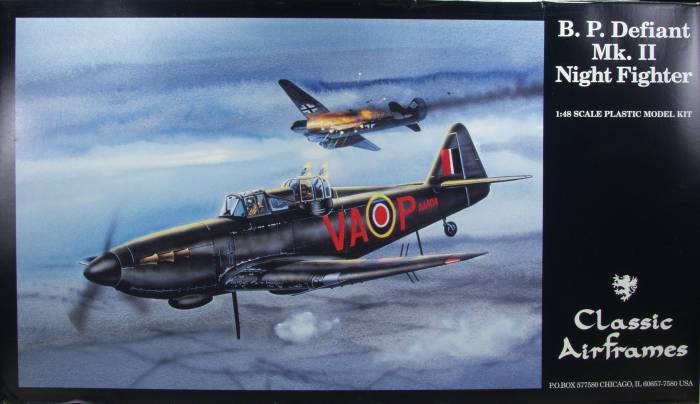
The Classic Airframes kit comes in a two part top open box with nice artwork on the top. Inside the box is a compartmented plastic bag. One section contains the main sprues and another small bag with resin parts and the other section contains the clear parts, another small bag with a couple more resin parts and a fret of photoetch. Everything seemed in good order except for the photoetch which had been bent but not to the point of being unusable. The kit is molded in what has become typical for CA, a bluish gray plastic. The finish is glossy and smooth with recessed panel lines and surface detail. I found no sink holes or other imperfections. There was only a light amount of flash on the large parts and a bit more on some of the smaller parts. The control surfaces were all fixed and the fabric very nicely rendered. There are some ejector pin towers inside the parts but most will not be seen or interfere with assembly. Although the instructions reference it, the nose for the MKI was not in my kit having been removed from the sprues. There are two rudders included as the MKII had a larger one. The propellers are done as an assembly and there are two sets of blades, the night fighter having a larger cord blade. The landing gear is nicely represented and the wheels are not weighted. Altogether there are 64 parts in gray although 6 parts are not used on this version. See photos below.
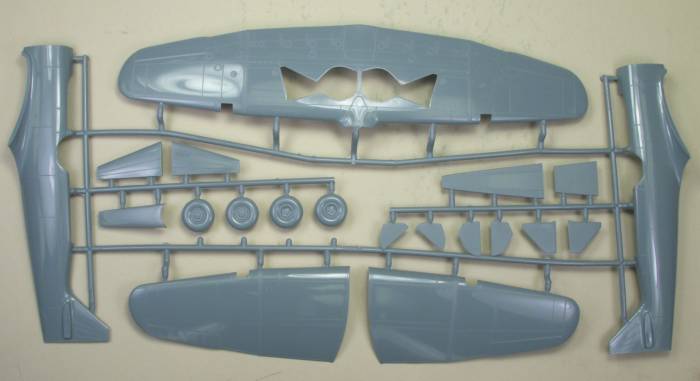
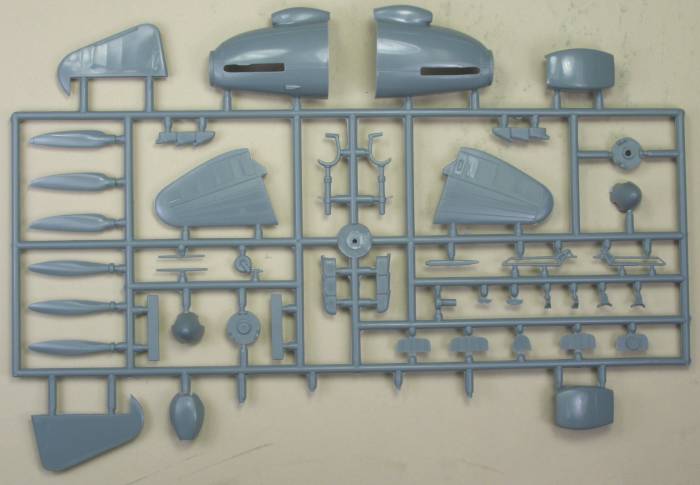
Most of the cockpit and turret interior are done in resin as are the gear wells. The pieces are molded in a gray resin and are sharply molded with little flash but a couple do have some substantial pour blocks. I found no short shots, pin holes or other defects on the parts. See photos below
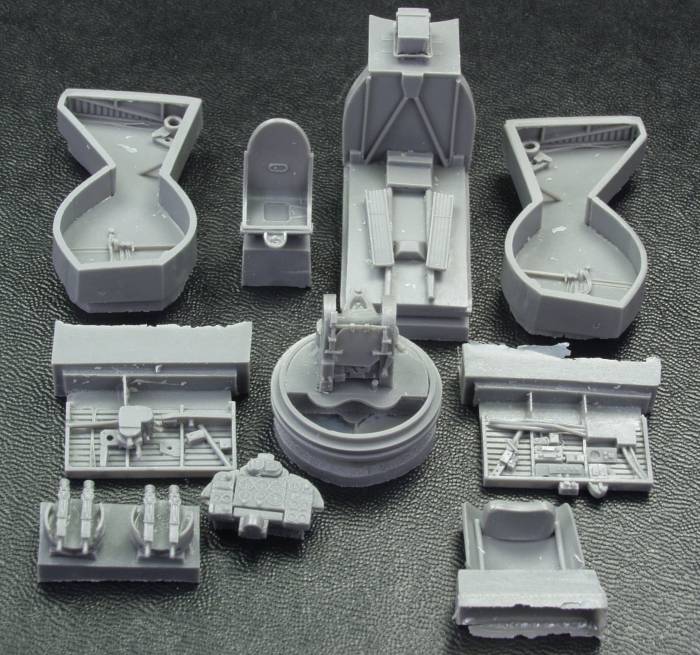
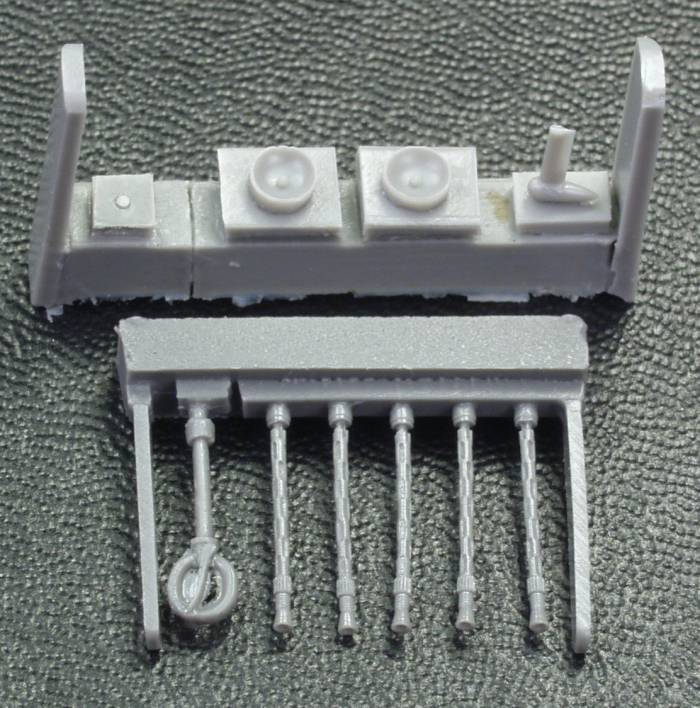
The clear parts are nicely done with raised frame lines. The turret is molded in two parts which means a seam to deal with but it does occur at a point where there is a frame member inside. The glass is clear an reasonably thin and should look great with a coat of Future. See photo below.
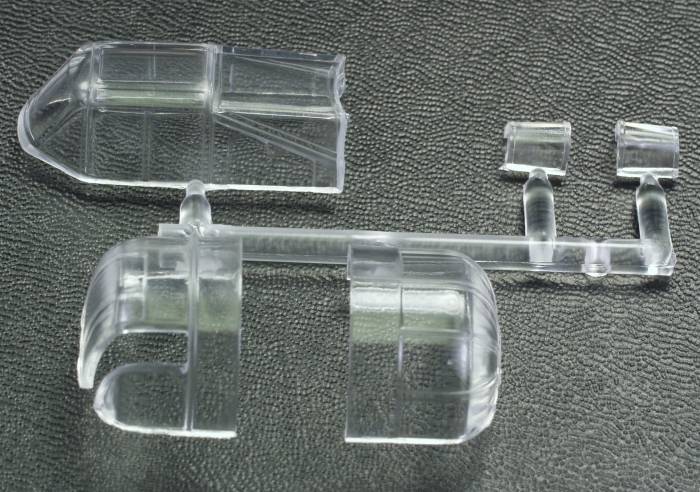
The photoetch fret contains a harness and belts for the pilot and belts for the turret operator. The balance of the parts are for the radar antenna. See photo below.
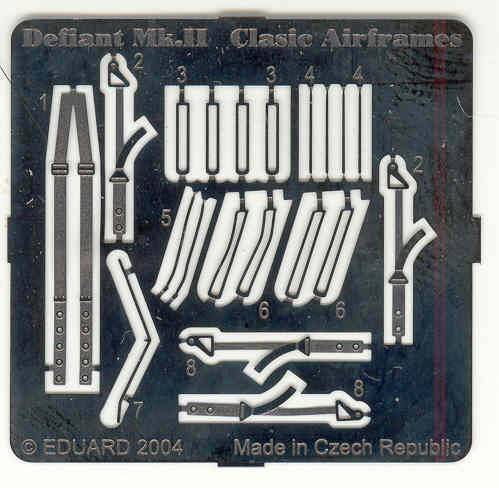
The decals provide markings for two aircraft, both in all black. There are two sheets, printed by Microscale, one has the unit markings the other the national markings and stenciling, of which a fair amount is included. The decals are glossy, appear opaque and are in register, although the ones that usually give decal makers the most problems are the stacked type so if it ends up out of register, it's your fault. See photo below.
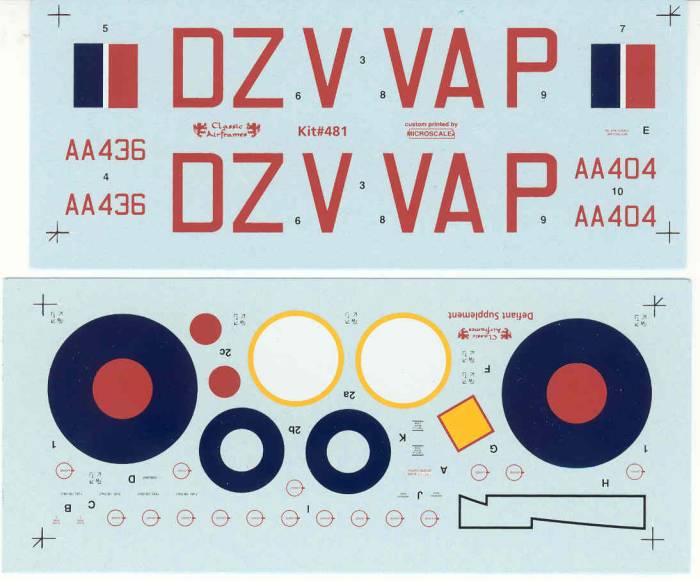
The instructions are printed on a single 8 1/2" x 14" page printed on both sides and folded to form four pages. The first page is history and specifications, page two contains an icon chart, color key and parts map, the other two pages are assembly diagrams. There are two half 8 1/2" x 11" sheets, one printed on both sides has painting and marking information for the two aircraft included in the decals and the other sheet, printed on one side has the stenciling and generic markings.
Conclusions
This kit is a fairly typical CA kit and should build up into a nice replica of this interesting aircraft. Like all their kits one must take time to test fit parts and adjust as required and this is noted numerous places in the instruction sheet. This is reported to be one of their better kits and I'm looking forward to assembling it. Recommended to anyone with some short run kit experience.
Links to kit build or reviews
A review / build of both versions can be found here.
References
A Famous Fighters of the Second World War by William Green
Boulton Paul Defiant by Mark Ansell
Back to the Night Fighter page
Updated
8/15/08